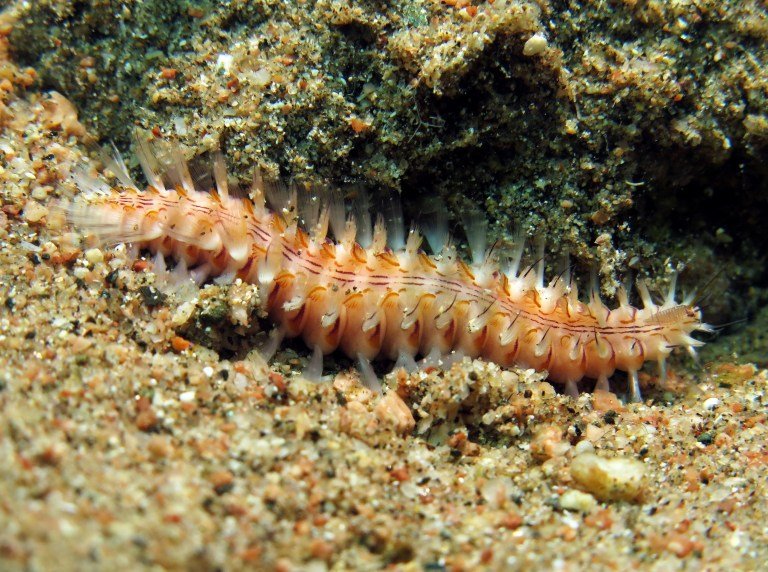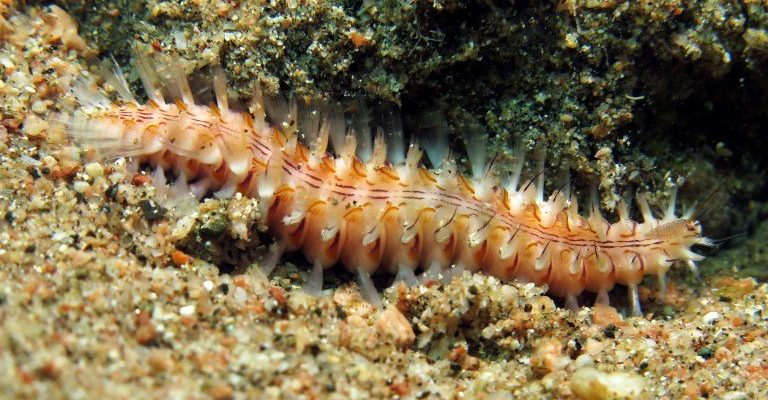
Imagine bringing home a new pet. You want to provide the best food possible, right? The same goes for maintaining a healthy aquarium. Understanding what different organisms, like bristle worms, eat is crucial for keeping your fish and ecosystem thriving. So let’s explore the world of bristle worms, how they interact with your fish food, and what their dietary preferences might mean for your aquarium.
What Are Bristle Worms?
Bristle worms are fascinating creatures that belong to the polychaete family. They’re often found in marine environments, but some species also inhabit freshwater. Typically, these worms range in size from a few inches to several feet long, making them quite a sight if you encounter one in your tank. They have bristles—often called “chaetae”—along their bodies, which can give them a fuzzy appearance.
You might come across various species, but the most common ones found in aquariums are the *Eunice* and *Nereis* species. These worms play a significant role in the aquarium ecosystem; they’re scavengers that help break down waste and organic material, contributing to a balanced environment. However, their feeding habits often lead to questions about whether they eat fish food or prefer live prey.
Feeding Habits of Bristle Worms
So, what do bristle worms actually eat? Here’s the thing—these worms are opportunistic feeders. They’ll eat just about anything organic that’s available, which can include leftover fish food, decaying plant matter, and even dead fish. Because they have a broad diet, they can be very useful in keeping your tank clean.
When it comes to fish food, bristle worms aren’t picky eaters. If you’re feeding your fish some pellets or flakes and there’s a bit of leftover, you can bet bristle worms will happily snatch it up. Their ability to consume what’s often neglected can prevent waste build-up in your aquarium, but it also raises some concerns.
Do Bristle Worms Prefer Live Prey?
Now, you might be wondering if bristle worms will go after live prey. While bristle worms can eat smaller organisms like zooplankton or even the occasional small fish, they generally prefer scavenging over actively hunting. In most cases, bristle worms won’t harm your healthy fish. They’re more about picking up leftovers and recycling nutrients than launching an attack.
But here’s a twist: if a fish is injured or already dead, a bristle worm won’t hesitate to take a nibble. This means that, while they don’t usually pose a threat to live fish, it’s essential to keep an eye on your tank’s health. If your fish are showing signs of distress or illness, addressing those issues should be a priority.
Signs of Overpopulation
Bristle worms can be beneficial up to a point, but if their numbers grow too high, they might start causing problems. You might notice them thriving if you see a lot of uneaten food lying around. A sudden increase in their population often stems from overfeeding your fish or not maintaining a clean environment.
If you’re spotting more bristle worms than you’re comfortable with, it’s time to take a closer look at your feeding habits. Adjusting your fish’s diet can help regulate the bristle worm population. You might also consider adding some natural predators, like certain fish species that enjoy snacking on worms, as a way to bring balance back to your tank.
How to Manage Bristle Worm Populations
If you find yourself with too many bristle worms, don’t panic. There are several ways to manage their numbers effectively. Here are some strategies to consider:
- Reduce Feeding: Cut back on how much you feed your fish. If you see leftover food, it’s time to feed less.
- Increase Cleanup Crew: Introduce fish or invertebrates that naturally feed on bristle worms, like some types of wrasses or six-line wrasses.
- Manual Removal: If you’re feeling brave, you can remove them by hand—just be careful of their bristles, as they can cause irritation.
By managing their population, you can enjoy the benefits of bristle worms without the worry of them overwhelming your tank.
Understanding Their Role in Your Aquarium
Bristle worms can often be misunderstood. While they’re certainly not the most glamorous inhabitants of your aquarium, they fulfill essential roles. Their scavenging helps break down organic material, keeping your tank cleaner and contributing to nutrient cycling.
However, like any creature, they need to be monitored. Maintaining balance is the name of the game in any aquarium. If you notice a decline in your fish’s health or an increase in bristle worm numbers, that’s a signal to reassess your practices.
Bristle worms are like the garbage collectors of your aquarium. They do their job, but it’s up to you to ensure they don’t take over the neighborhood!
Final Thoughts on Bristle Worm Diets
In the end, understanding whether bristle worms eat fish food or live prey is vital for keeping your aquarium thriving. They will munch on both, but their role as scavengers means they often feast on leftovers rather than hunting down live fish. Keeping their population in check and monitoring aquarium health will ensure that your underwater ecosystem remains balanced.
So the next time you spot a bristle worm waving its bristles in the current, remember—these little guys are working hard to keep your tank clean. Just make sure they don’t get too comfortable, and your fish will thank you for it!

